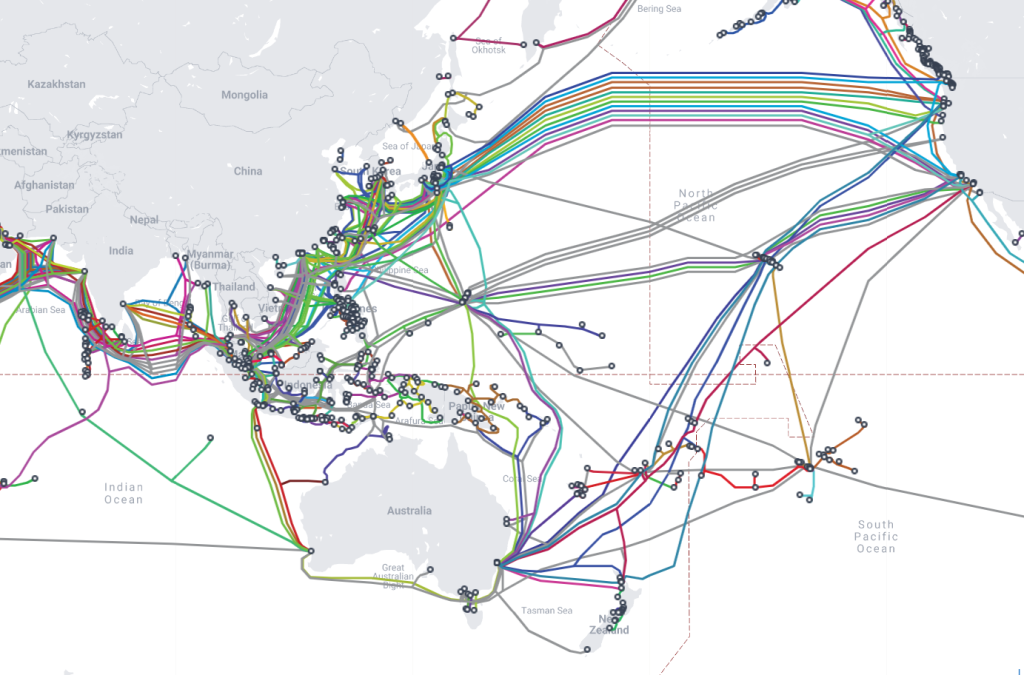1. The internet
The internet, along with the systems that run on it, including the World Wide Web (“the web”), is vital for living, learning, and working in today’s society.
 Check your knowledge
Check your knowledge
What is the internet?
The internet is a system of computer networks, which rely on shared protocols, or standards, in order to communicate with each other. The web is just one of the applications that relies on the internet. Others include email, instant messaging, Voiceover IP (VoIP), and file transfer (FTP).
![]() What is the internet (YouTube, 3m44s)
What is the internet (YouTube, 3m44s)
Connecting to the internet at UQ
Enrolled students have access to wired and wireless internet and an unlimited internet quota. Learn how to connect to wifi and internet. UQ has an Acceptable use of UQ ICT Resources Guideline.
Why is Australia’s internet so slow?
The internet relies on a whole range of physical infrastructure, including routers, exchange points, telephone lines, fiber-optic cables, and satellites. This physical infrastructure has a large impact on your internet experience.

Screenshot of internet submarine cables. Source: Submarine Cable Maps by TeleGeography. Map data @2024 Google, INEGI
Australia’s size, location in the world, and dispersed population mean that we have slower broadband speeds than many other countries (the Speedtest Global Index places Australia as the 64th (January 2020) fastest country for fixed broadband), and much slower speeds than some other countries in the Asia-Pacific region.
How does your internet speed rank against the global averages?
![]() Do an internet speed test at Speedtest.net to find out.
Do an internet speed test at Speedtest.net to find out.
Digital access
Digital access, or getting online is one of the key steps towards digital citizenship, and is in part about recognising that internet access is a privilege not available to a large section of the population.
While internet access is not currently enshrined as a human right by the United Nations, it is recognised as being important for ‘the fulfillment of many human rights’ (Tomalty, 2017). The 2015 UN resolution ‘Transforming Our World: the 2030 agenda for sustainable development’ calls for countries to “significantly increase access to information and communications technology and strive to provide universal and affordable access to the Internet in least developed countries by 2020” in order to increase innovation and industrialisation across the world.
The digital divide
It might surprise you to know that not every home in Australia has access to the internet. Almost a quarter of Australians and over one million homes don’t have an internet connection. Part of this is down to our geography – it is hard to get internet connections in remote communities because of the cost of improving the infrastructure. However, age, cost, ability to use technology and confidence are also causes of this division in our society. Recognising that not everyone has access, or feels capable of accessing the internet is a key part of digital citizenship.
According to data from the International Telecommunication Union, 74% of the world’s population were using the internet in 2025. Many developing countries have little or no internet access. This means that comparatively Australians have a good level of access. Visit Individuals using the Internet (% of population) by the World Bank for more information.
The digital divide isn’t just about whether or not we can access the internet. It’s also about the quality of our internet connection. The difference between average download speeds in different countries demonstrates further inequality in digital access.

